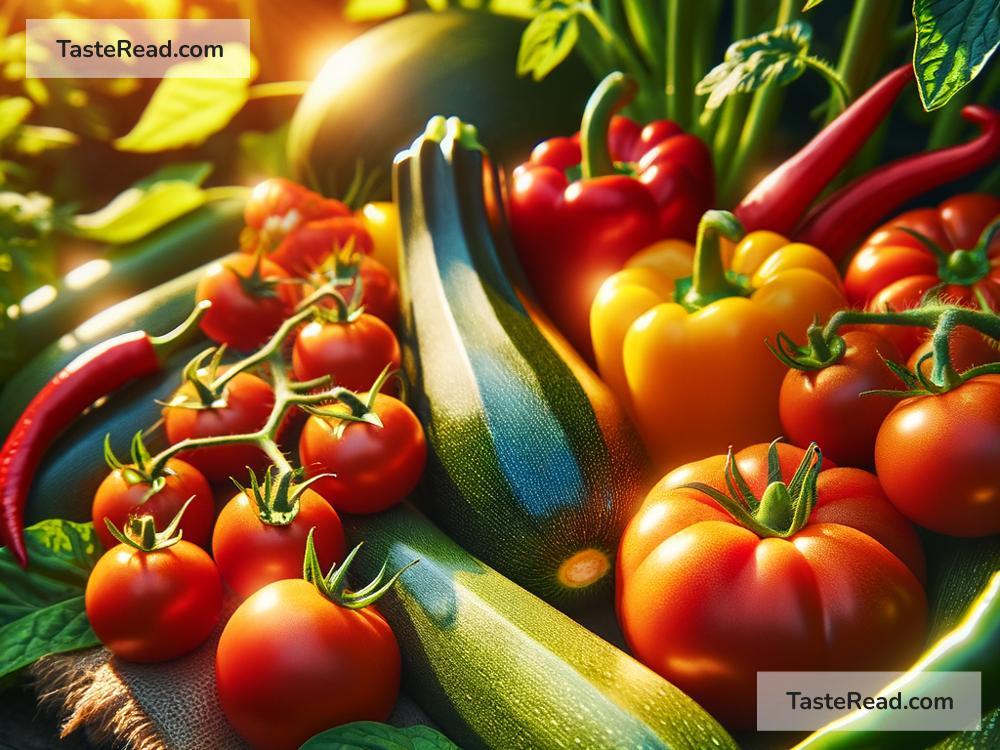The Effect of UV Radiation on the Flavor of Outdoor-Grown Vegetables
Have you ever wondered why vegetables grown outdoors under the sun taste different—sometimes richer, sweeter, or more flavorful—than vegetables grown indoors or in controlled environments? One key reason is the effect of ultraviolet (UV) radiation, a type of light from the sun that influences plants in fascinating ways.
In this blog, we’ll explore how UV radiation affects the flavor of vegetables grown outdoors. We’ll stick to simple language so everyone can understand the science behind this natural phenomenon.
What Is UV Radiation?
UV radiation is a type of invisible light emitted by the sun. It’s well-known for causing sunburns, but it also has important effects on plants and our planet. There are three types of UV radiation: UV-A, UV-B, and UV-C. Fortunately, UV-C doesn’t reach us because Earth’s atmosphere blocks it, but UV-A and UV-B penetrate our atmosphere and interact with plants.
While UV radiation can be harmful in high doses, plants have evolved to handle UV rays. In fact, they make the best of it by using UV light as a signal to produce certain chemicals that protect them and enhance their qualities.
How UV Radiation Impacts Vegetables
When vegetables grow outdoors under natural sunlight, they are exposed to UV radiation. This exposure can cause physical and chemical changes in the plants, impacting their flavor, texture, and nutritional value. Here’s how it works:
1. Increased Production of Protective Chemicals
Just like sunscreen protects our skin, plants produce protective chemicals to shield themselves from UV radiation. One type of chemical they produce is called “flavonoids.” Flavonoids are antioxidants, which help protect the plant from damage caused by UV rays.
These antioxidants don’t just work to protect the plant—they also affect the flavor of the vegetable. For example, flavonoids add bitterness or complexity to the taste of vegetables like spinach and kale. Other compounds, like phenols, increase sweetness or pungency in veggies like tomatoes, peppers, and onions.
Essentially, when a vegetable grows out in the sun, it develops a more complex and interesting flavor profile because of these chemical changes.
2. Sugar Content and Sweetness
UV radiation can also encourage the production of sugars in certain plants. For example, carrots and sweet potatoes grown in sunny outdoor conditions often taste sweeter than those grown indoors. This is because plants convert sunlight into energy through photosynthesis, a process boosted by UV light.
In colder or more challenging climates, outdoor vegetables exposed to UV radiation may become even sweeter because they store more sugars to survive tough conditions. This is why vegetables like parsnips harvested after a frost are famously sweet—they’ve responded to environmental stress!
3. Improved Aromas and Flavors
Another intriguing effect of UV exposure is its impact on the aroma or smell of vegetables. UV radiation can trigger the production of volatile organic compounds (VOCs), which are responsible for the scents and tastes we love. For example, outdoor-grown herbs like basil, cilantro, and thyme often smell and taste more pungent or distinctive than those grown indoors.
Tomatoes, too, are a great example. The sun’s UV rays stimulate the production of lycopene, a compound that gives tomatoes their red color and rich, sweet flavor. Farmers often say that “sun-ripened tomatoes” are tastier, and now you know why!
Why Indoor-Grown Vegetables Are Different
For comparison, vegetables grown indoors or in controlled environments, like greenhouses, are often protected from UV radiation. While this setup can be helpful for increasing yield and reducing pests, it doesn’t encourage plants to produce the same level of protective chemicals or sugars. As a result, indoor-grown vegetables may lack the complex flavors and aromas of their sun-grown counterparts.
This isn’t to say all indoor-grown vegetables are bland. In some cases, farmers use LED lights with UV wavelengths to mimic sunlight. However, many indoor-growing systems prioritize fast growth and large sizes rather than flavor, so these vegetables can taste milder.
Other Factors Besides UV Radiation
While UV radiation plays a big role in determining a vegetable’s flavor, it’s important to note that it’s not the only factor. Soil quality, water availability, temperature, and harvest timing all influence how vegetables taste. However, UV light is unique because it directly triggers chemical changes in the plant—it’s like nature’s seasoning.
The Benefits of Choosing Sun-Grown Vegetables
If you want the richest, most flavorful vegetables, choosing outdoor-grown produce might be the way to go. Whether it’s a sweet carrot, a tangy tomato, or a fragrant herb, sunlight naturally enhances the taste and aroma of veggies. You’ll also benefit from a higher antioxidant content, which can be good for your health.
When shopping, look for seasonal, locally grown vegetables that have been exposed to natural sunlight. Farmer’s markets and outdoor gardens are great places to find these sun-soaked treasures.
Conclusion
UV radiation might sound like something to avoid, but for outdoor-grown vegetables, it’s a blessing! Vegetables respond to UV rays by producing protective chemicals, sugars, and aromas, giving them richer flavors and scents. This makes sunlight an essential ingredient in the recipe for delicious, natural produce.
Next time you bite into a sun-ripened tomato or enjoy a home-grown cucumber, take a moment to thank the UV rays for their role in creating that wonderful taste. And if you’re looking for vibrant, flavorful vegetables, don’t underestimate the power of nature’s sunlight!


